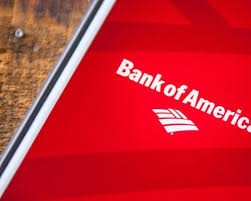Bank of America’s Return to 1950s Style Banking Is Paying Off

No sooner had Brian Moynihan taken the helm of Bank of America at the start of 2010, than the giant lender suffered wave upon wave of giant, potentially fatal, losses on its stricken mortgage portfolio. From the start, Moynihan championed a highly conservative strategy of growing with today’s customers instead of courting risky new ones. The idea was to attract more business from the folks who already banked mainly with BofA, and let go the customers who got their mortgage, and deposited their paychecks, at the cross-town competitor. If revenues grew with the overall economy, costs remained flat, and BofA avoided the steep credit losses that plagued it in the past––specifically by sticking with those reliable customers, Moynihan claimed, it could become a money machine. Essentially, he advocated a return the 1950s style, bedrock banking that had been highly successful prior to the financial crisis, and he said, could rise again.
Judging from the third quarter results that Moynihan announced on October 13, what he calls “responsible growth” is finally succeeding, and could be on the cusp of succeeding in a spectacular fashion. Here are key takeaways from the financials and earnings call.
IT’S ALL ABOUT OPERATING LEVERAGE
Moynihan is a demon on expenses. He’s shrunk the branch network, lowered headcount, and promoted digital banking that’s radically lowered the cost of every day transactions. From Q3 2016 to Q3 2017, total expenses dropped by 2.2% to $ 13.1 billion. Revenues rose just 1% because of a decline in trading, but because costs fell and expense for bad loans improved, BofA’s net income jumped 12%. That combination of moderate revenue growth, few bad loans, and falling costs provides what Moynihan most prizes, “operating leverage” that propels earnings far faster than revenues.
THE CONSUMER BANK POINTS THE WAY
BofA’s biggest business is consumer banking, comprising its branch network and credit card franchise. Its principal strength is its gigantic, low cost base of deposits, cash primarily sitting in checking accounts. On average, BofA pays just 0.04% on each dollar of those funds; it’s those “sticky,” incredibly cheap balances that attracts its biggest shareholder: Warren Buffett’s Berkshire Hathaway. Both the deposit base and the loan portfolio are now growing briskly, generating big operating leverage. In the third quarter, revenues showed year over year growth of 9.2%, and costs dropped 2%, driving pre-tax income almost 14% higher.
Rising interest rates are poised to swell the consumer bank’s profits. BofA reckons that every 1 point increase in short-term rates drives an extra $ 3.2 billion in pre-tax income. So look for revenues to keep waxing, and for operating leverage to get stronger as Moynihan fulfills his pledge to drive down costs well into next year, then hold the expense line steady thereafter as loans and interest income keep growing.
IT STILL ISN’T FIRST IN CLASS
For the first three quarters of 2017, BofA earned $ 15.7 billion. On an annualized basis, that $ 21billion is getting close to the performance that Moynihan predicted in 2011—albeit many years late. But BofA is still trailing its two main rivals, Wells Fargo and JP Morgan Chase. Despite a downtick in Q3, Wells’ quarterly earnings have outpaced BofA’s. And for the first nine months of the year, JP Morgan booked net profits of $ 20.3 billion 29% more than BofA.
Hence, BofA still has plenty of catching up to do. What’s impressive is how far it’s already come, and the potential of deploying an incredibly low cost deposit base––think of manufacturer with minimal cost-of-goods-sold––in a time of rising loans and rates.
In fact, BofA recently reached a milestone even its fans couldn’t have predicted. Its $ 271 billion market cap narrowly exceeds that of Wells Fargo, which held a seemingly insurmountable lead just eighteen months ago. Wells championed a go-go sales strategy that backfired, BofA just kept plodding. Moynihan is proving that building an old-fashioned plodder––updated for the digital age––is the way to go.
